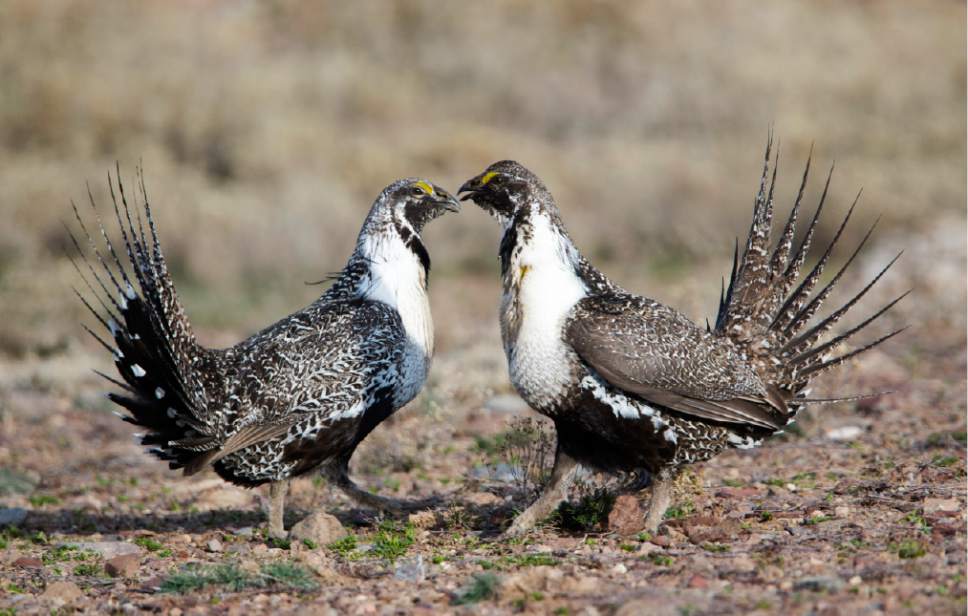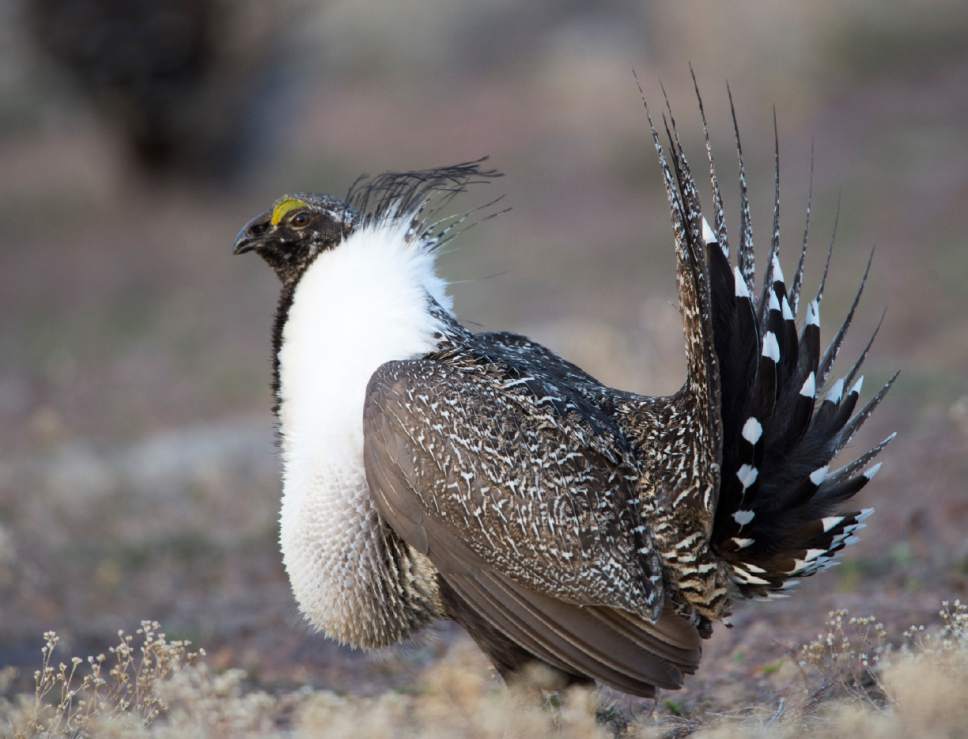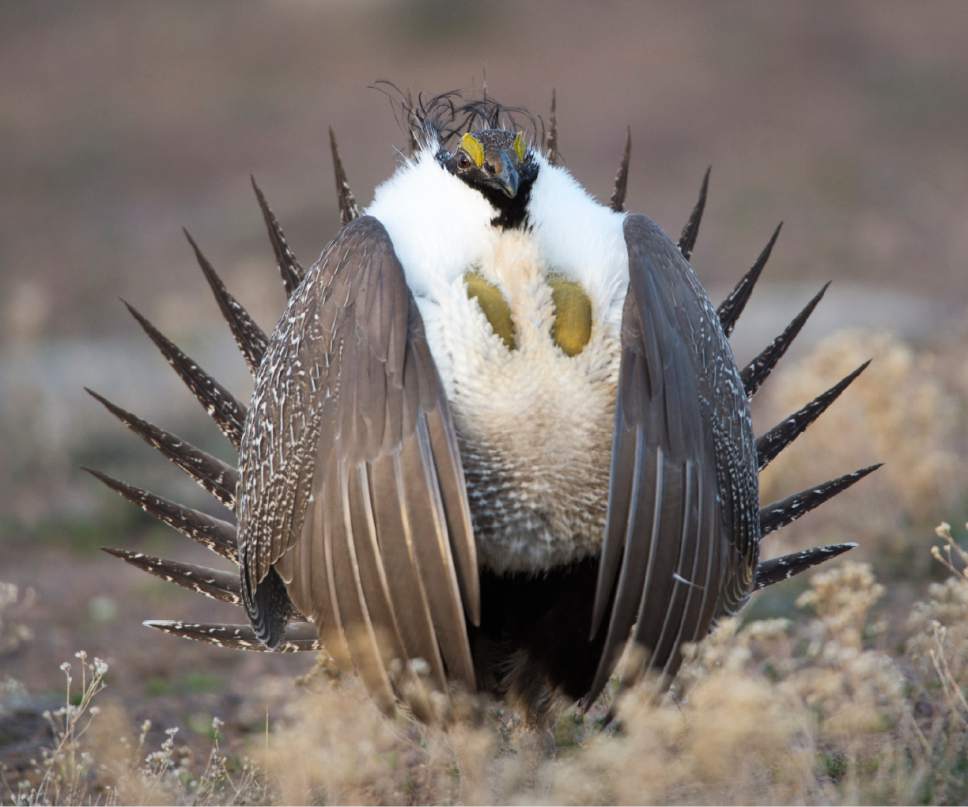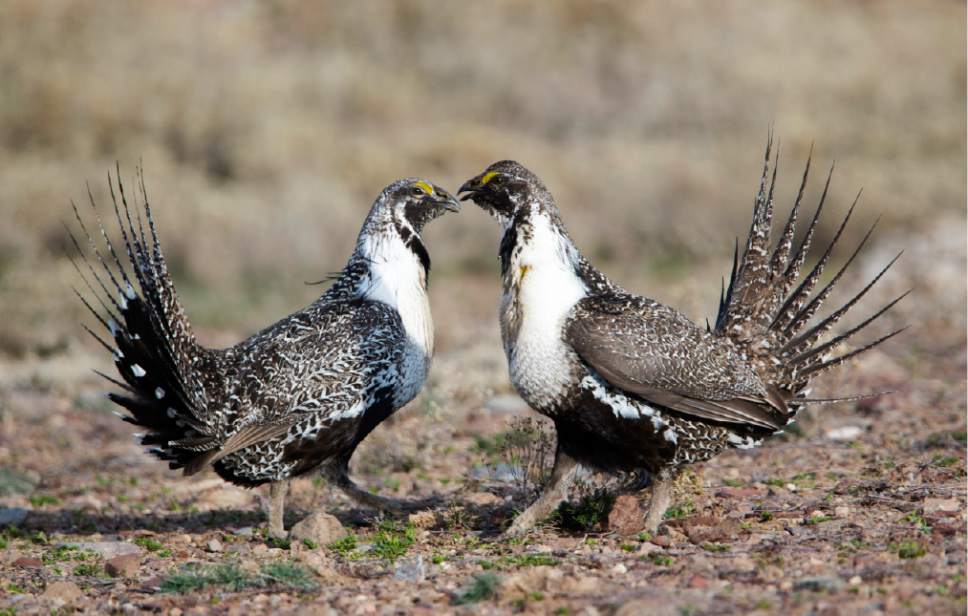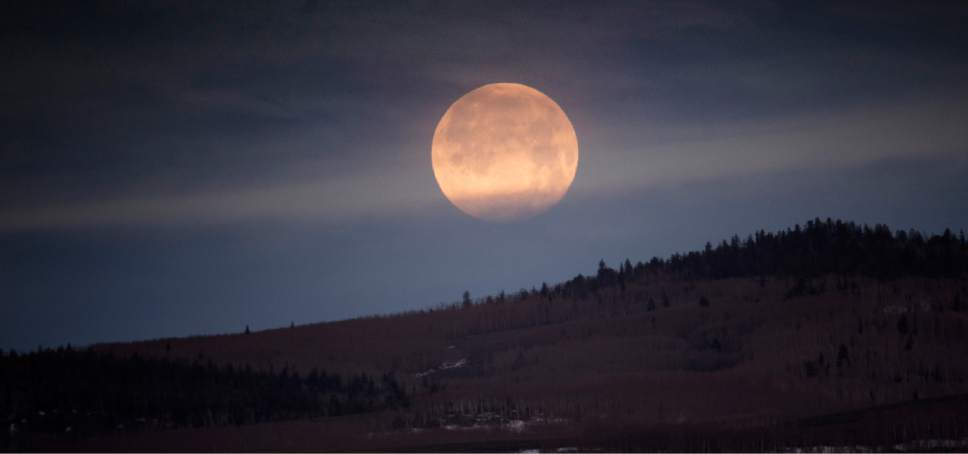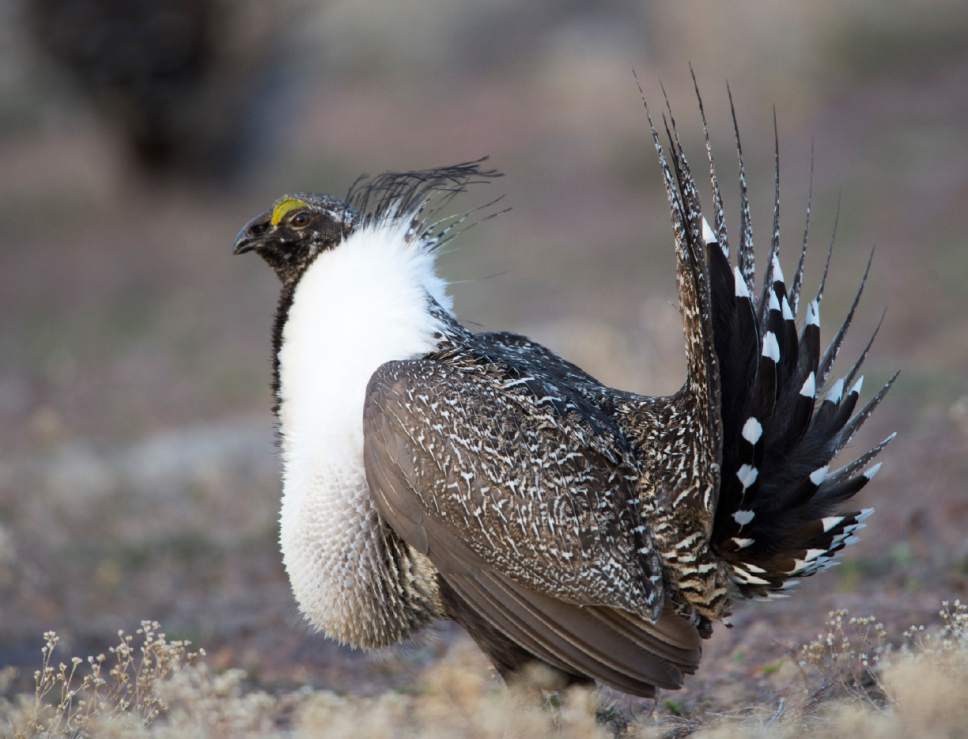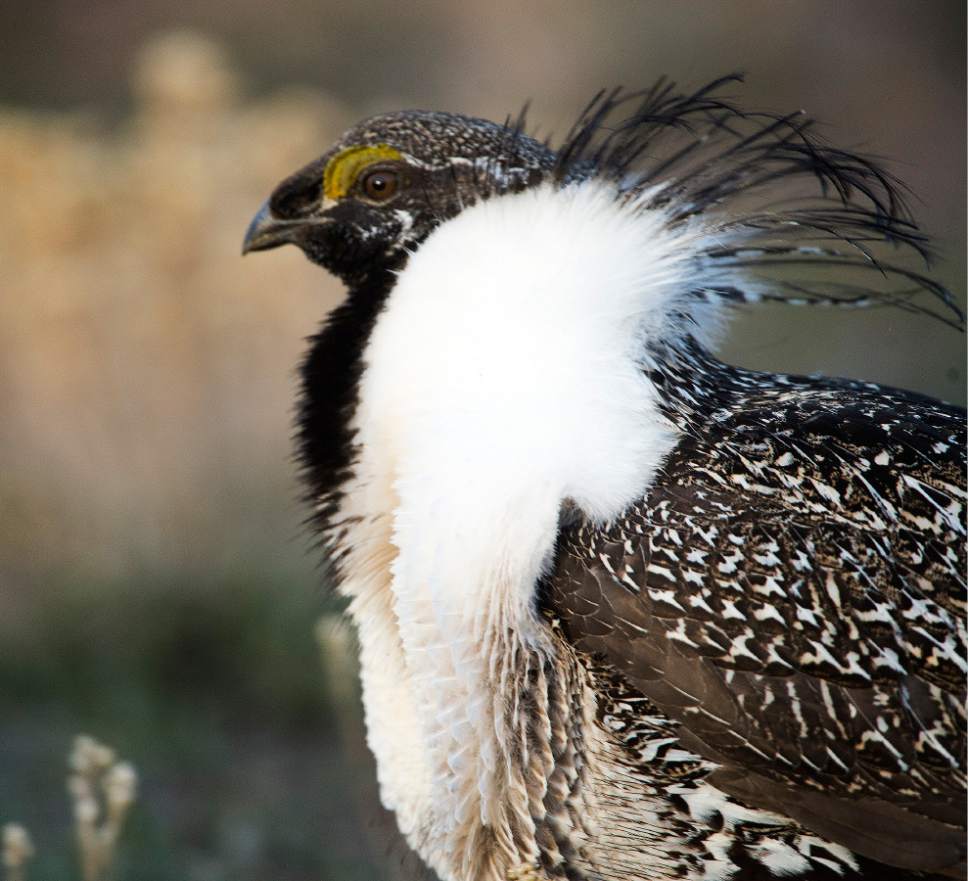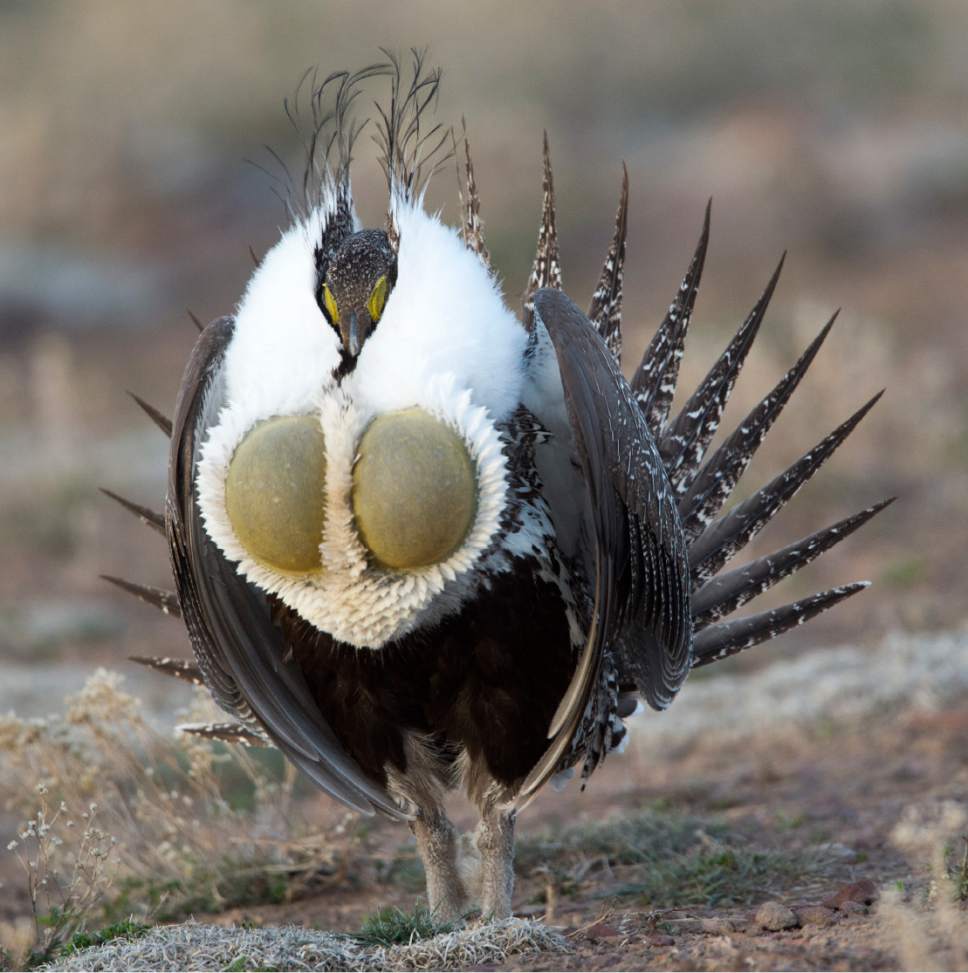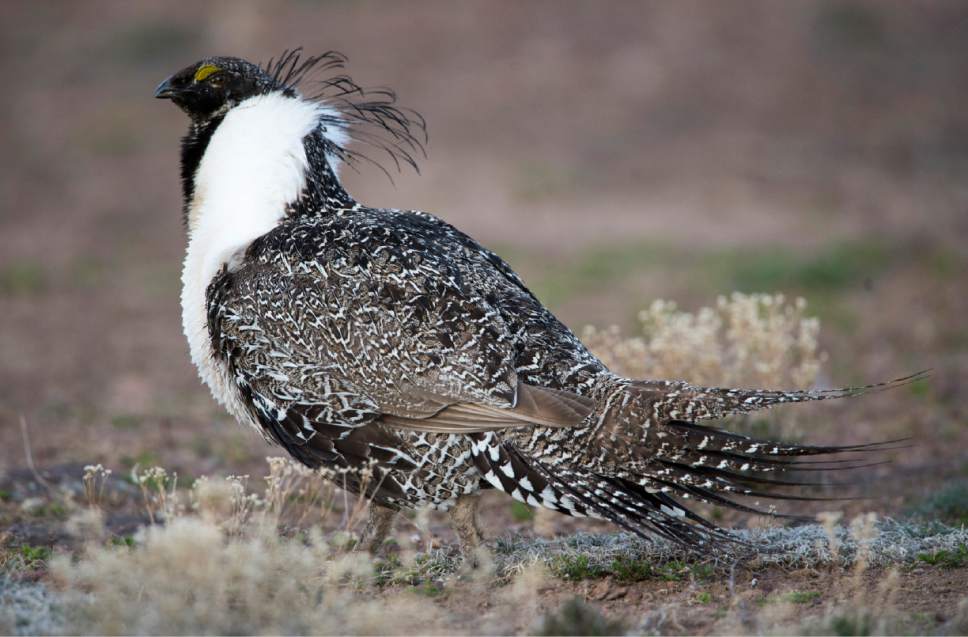This is an archived article that was published on sltrib.com in 2016, and information in the article may be outdated. It is provided only for personal research purposes and may not be reprinted.
Yet another lawsuit has been filed over revisions to federal land use plans that kept greater sage grouse off the endangered species list, this time from an oil and gas trade association that claims that the public was excluded from the process and that the plans rely on faulty science.
In papers filed Thursday in U.S. District Court in North Dakota, the Western Energy Alliance says the Bureau of Land Management and the U.S. Forest Service violated federal administrative rule-making procedures when they approved "top-down, centralized plans" in September.
"Oil and natural gas companies had implemented more than 770 specific protections for sage grouse, while reducing impact on the land by 70 percent with horizontal drilling and advanced hydraulic fracturing," Kathleen Sgamma, the trade group's vice president of government and public affairs, told reporters on a media call.
"In addition, states, counties, federal agencies, industries, ranchers, private landowners and conservation groups had come together to successfully protect the sage grouse and its habitat. As a result, sage grouse populations have not only rebounded, but are stable over the long term."
Conservationists reject the claim that the greater sage grouse, which once abounded across the Western steppes, are safe, and some groups argue that the federal plans hardly go far enough to protect sagebrush habitat from grazing and drilling.
"According to the science, a long-term decline is predicted," said Greta Anderson, deputy director of Western Watersheds Project. "A lot more is needed to stabilize these populations, and even more to recover them, which is the mandate of the Endangered Species Act."
Last year, Interior Secretary Sally Jewell praised the federal plan revisions, which affect 126 million acres of public land across 11 states, for providing sufficient safeguards to justify not extending federal protection to this iconic ground-nesting bird. But Utah officials complained that the revisions, which restrict mineral development in high-value habitat, are as burdensome as a decision to list sage grouse.
Utah filed its own suit in February, seeking to invalidate the revisions and saying the plans go too far.
A lawsuit brought by environmental groups is attacking the plans from the other direction.
"We are not trying to overturn the plans; we are trying to strengthen them. We want to close the loopholes," Anderson said. "It's a step forward, but we need a leap forward."
The Western Energy Alliance suit raises distinctly different issues from the Utah case, which says the federal plans aren't needed because Utah is implementing its own conservation plan.
"The alliance is challenging the agencies' failure to follow basic procedures, such as unilaterally and substantively amending BLM's oil and gas regulations in violation of the Administrative Procedure Act, resulting in unlawful plans that have shut out the public from the decision-making process," said attorney Bret Sumner. The new rules impose a maximum disturbance cap at 3 percent of land area, seasonal drilling restrictions, buffers around nesting and lek sites, and other restrictions that industry supporters say are not necessary and fail to consider threats from nest predation and wildfire.
"By ignoring sound science, the agencies are exaggerating the impact of oil and natural gas development on sage grouse, and failing to recognize that oil and natural gas development coexists with sage grouse conservation," Sgamma said. "The draconian measures go well beyond reasonable mitigation of impact."
Her group says the rules will result in the loss of 9,267 oil and gas jobs, and thwart $2.5 billion in economic growth.
Citing the plan revisions, the BLM has already withheld 60,000 acres of public land that energy companies "nominated" for oil and gas leases, according to Sumner.
For example, sage grouse rules kept tens of thousands of Utah acres off a BLM oil and gas lease auction to be held Tuesday in Salt Lake City. The agency will be fielding bids on four parcels totaling 6,743 acres managed by the Richfield Field Office.
Oil and gas companies had nominated far more land in Utah's Color Country District, but the BLM deferred leasing decisions on 44 nominated parcels because they overlap with sage grouse "priority habitat."
The industry group is also incensed that the plans exempt 1,500 miles of transmission lines under development to deliver wind-generated power from Wyoming to Nevada.
"The 3 percent surface cap does not apply to these projects, even though their impacts will count against oil and gas surface restriction," Sumner said. Some of these lines will cross Utah's Uinta Basin.
Brian Maffly covers public lands for The Salt Lake Tribune. Maffly can be reached at bmaffly@sltrib.com or 801-257-8713.
Twitter: @brianmaffly


